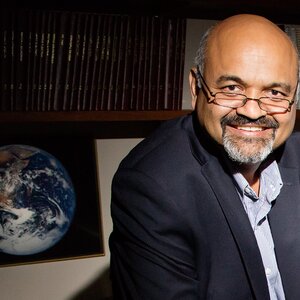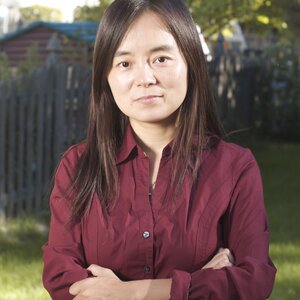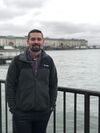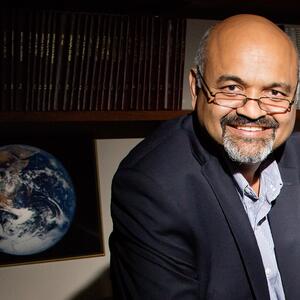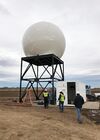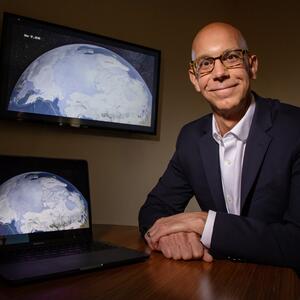Some of the most intense convective storms on Earth initiate near the Sierras de Córdoba mountain range in Argentina. The overarching goal of the RELAMPAGO field campaign, which was conducted near this mountain range during November-December 2018, was to observe these intense convective storms and their associated impacts. The field campaign had several components, including one focused on...
- As described by Prof. Don Wuebbles and colleagues in the January 2021 issue of EOS: Cities and urban areas already experience many different stresses, but now face additional stresses from ongoing and projected climate change. Many cities, including Barcelona, Chicago, New York, Paris, and Seattle, are attempting to increase sustainability through climate action plans that map out...
- The Global Carbon Project recently published the Global Carbon Budget 2020, giving world leaders access to data on atmospheric carbon concentrations, emissions and trends. Illinois atmospheric scientist Atul Jain was part of an international team of...
- Prof. Zhuo Wang is one of four professors in the College of LAS who have been named Richard and Margaret Romano Professorial Scholars for their leadership and research. Read more here.
- In June of 2016, nine United States Army soldiers were on a routine training exercise at Fort Hood, Texas. They made the decision to traverse a low water crossing on Owl Creek. Unbeknownst to them, that crossing was closed and under 7 feet of water. Tragically, their military vehicle was swept downstream and those nine soldiers perished. The Army’s Investigating Officer stated that procedural...
- A team of 25 scientists, including ATMS and GEOL professor Cristian Proistosescu, has made progress on a 40-year old question: How much will the Earth warm if human activity doubles the concentration of atmospheric Carbon Dioxide? This number, called Equilibrium Climate Sensitivity, traces its history to the first comprehensive assessment of the effects of carbon dioxide on...
- The subseasonal timescale, residing between the time scales of weather forecasts and seasonal outlooks, has long been considered a “predictability desert.” Prediction on this timescale is important for decision makers in a variety of sectors. While most research on subseasonal prediction has focused on temperature and precipitation, emergency management would greatly benefit from skillful...
- The following three undergraduates: Brandon Garcia, Kaylee Heimes, and Zach Chalmers, have been offered appointments to the NOAA Office of Education, Class of 2020 Ernest F. Hollings Undergraduate Scholarship Program. This prestigious program provides financial...
- IMPACTS is happening! The Investigation of Microphysics and Precipitation for Atlantic Coast-Threatening Snowstorms (IMPACTS) Field Campaign is now flying! Illinois participants include Prof. Bob Rauber and Graduate students Troy Zaremba, Andrew Janiszeski, Megan Varcie and Rose Miller. IMPACTS is a focused research program to study mesoscale processes in winter cyclones,...
- The date for the 4th edition of the Midwest Student Conference on Atmospheric Research (MSCAR) has been set: September 26-27, 2020. This conference is organized and run by Illinois ATMOS students. In 2019, +70 students, from 12 different institutions across the Midwest, presented their cutting-edge research. Stay tuned for more details! @...
- For most of us, tornado sirens and severe thunderstorm warnings mean that it’s time to hunker down and hope that the damage is minimal. Fortunately, there are people such as (Robert) Jeff Trapp, head of the Department of Atmospheric Sciences, who are trying to learn as much as possible about these intense weather events. Trapp’s research is being used by scientists, policy makers, and forecasters...
- CHAMPAIGN, Ill. — A team of Midwestern climate scientists has released a new report with grim predictions about the impact of climate change on the Great Lakes region. The report foresees a growing trend of wetter winters and springs, with increases in heavy rain events leading to flooding, particularly in urban areas with hard surfaces that cannot absorb the excess water. Rural areas will likely...
- On Dec. 5, the Global Carbon Project published the Global Carbon Budget 2018, giving world leaders access to data on atmospheric carbon concentrations, emissions and trends. Illinois atmospheric scientist Atul Jain was among the many scientists worldwide who contributed data to the report. Jain talked about the carbon budget and this year’s findings with News Bureau...
- Atmospheric scientists at Illinois are headed to Argentina this November to lead an international team of researchers in a $30 million field campaign to research the most intense thunderstorms in the world. As springtime rolls into Pampas, a vast plains region spreading from the foothills of the Andes Mountains in Argentina to the Atlantic Ocean in Brazil, the 50 million residents of the region...
- CHAMPAIGN, Ill. — The effects of global climate change taking place in the Arctic may influence weather much closer to home for millions of Americans, researchers report. The United States has experienced many changes in severe-weather behavior over the past decade, including fewer tornado touchdowns than in the past. A new study suggests that atmospheric circulation changes that coincide with a...


